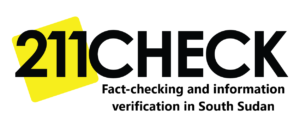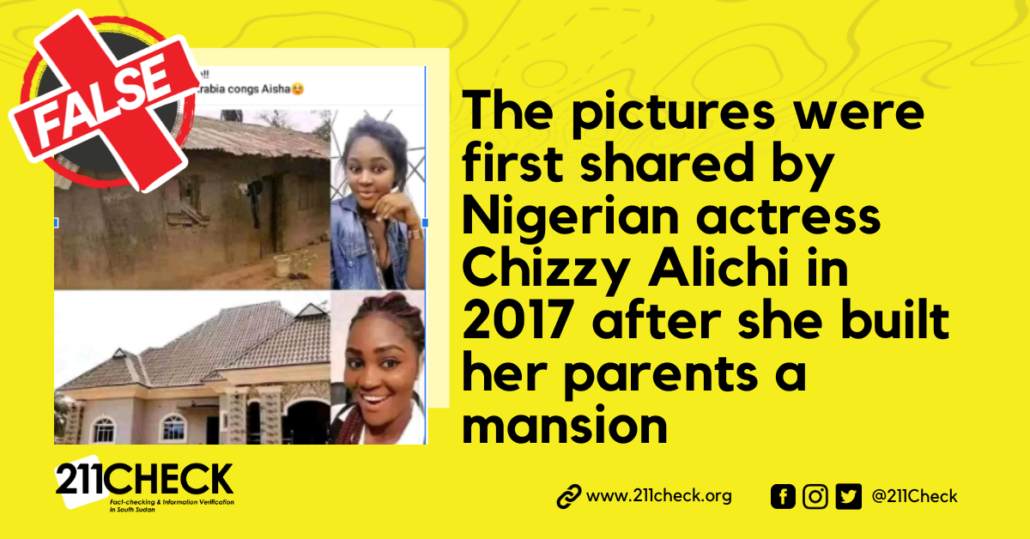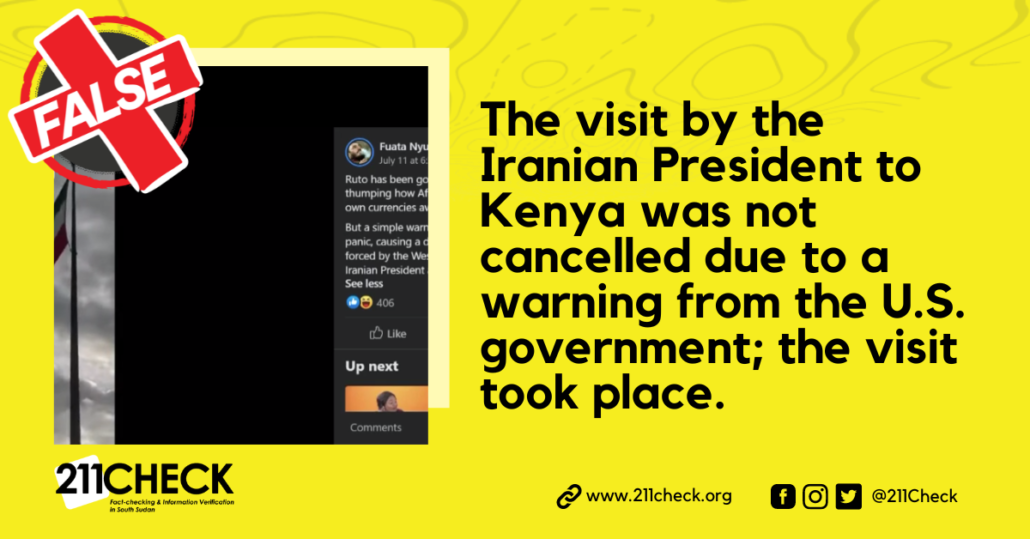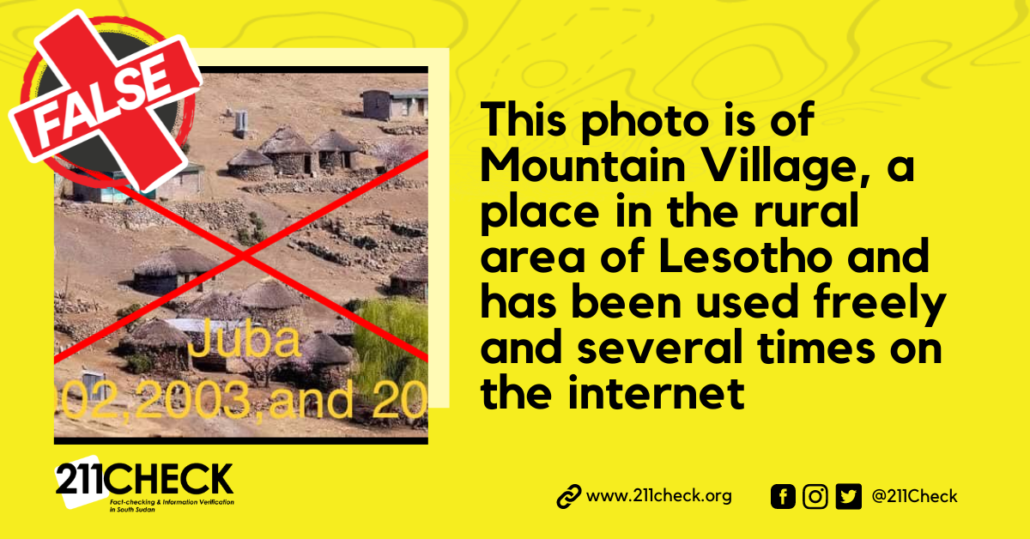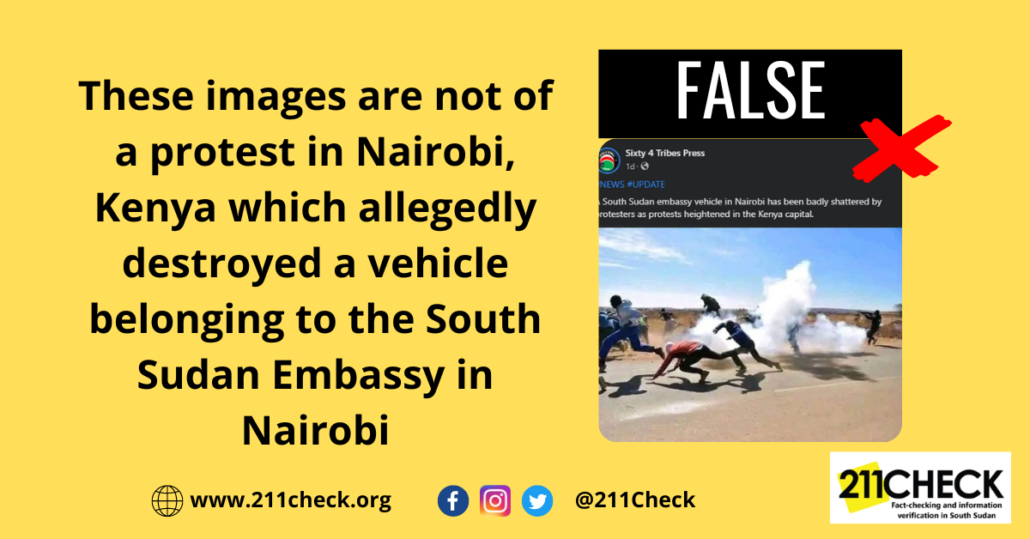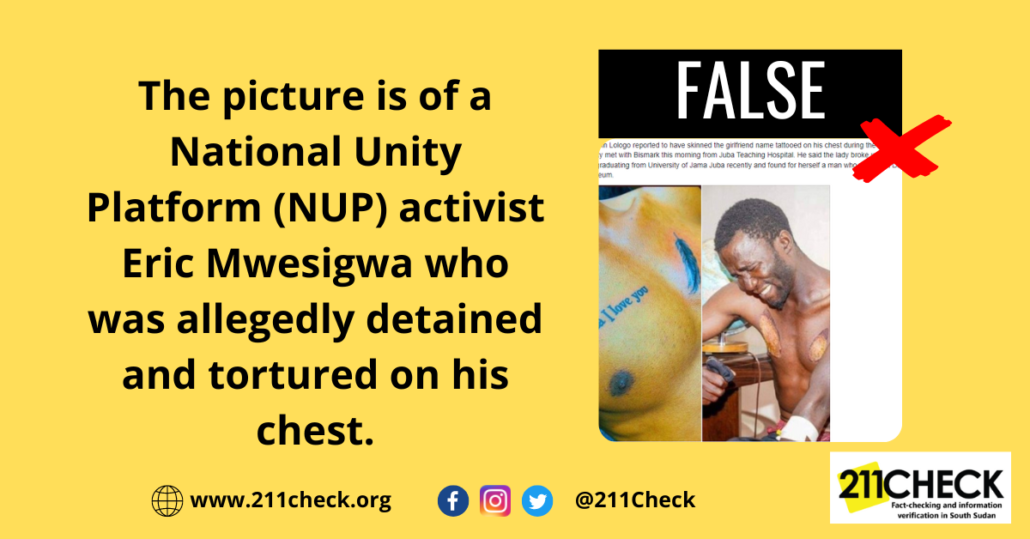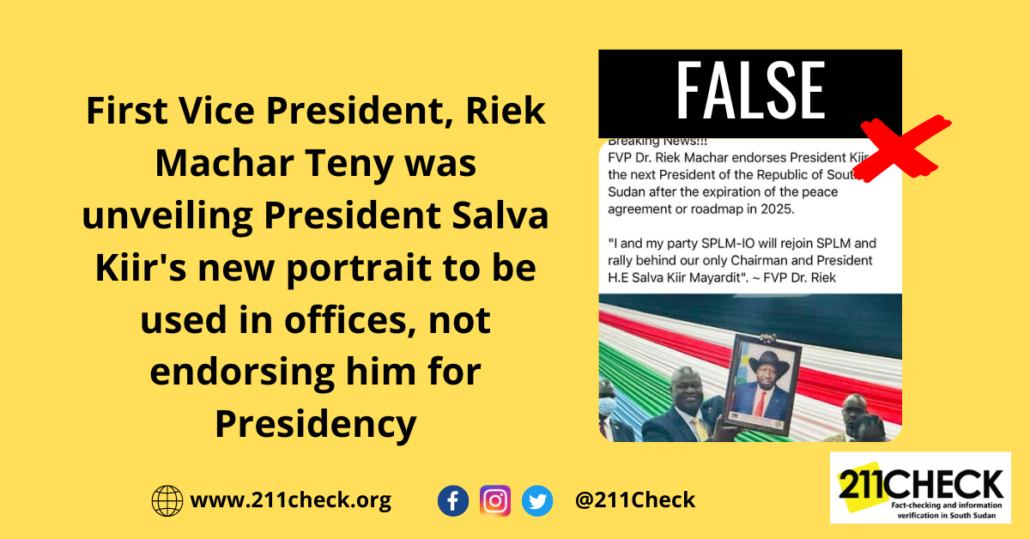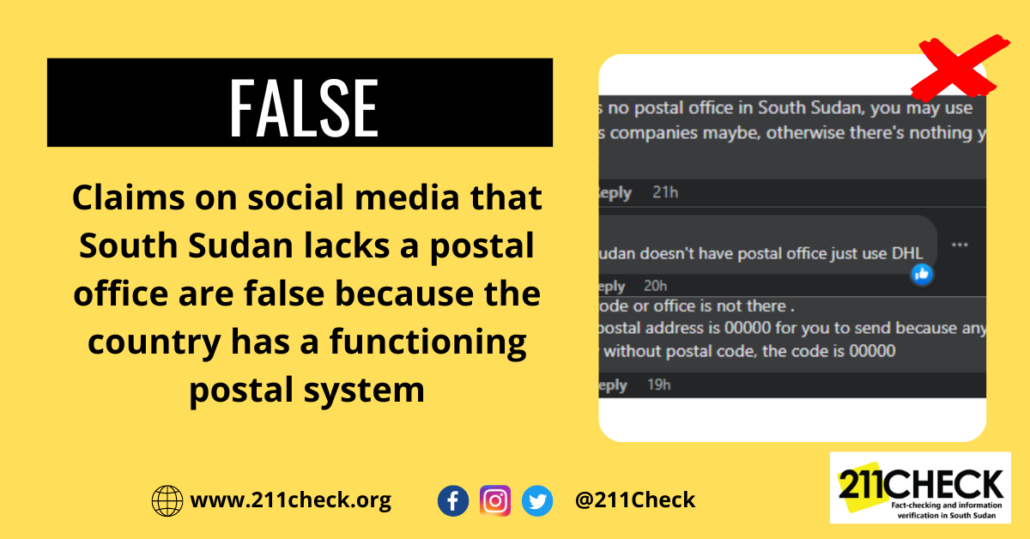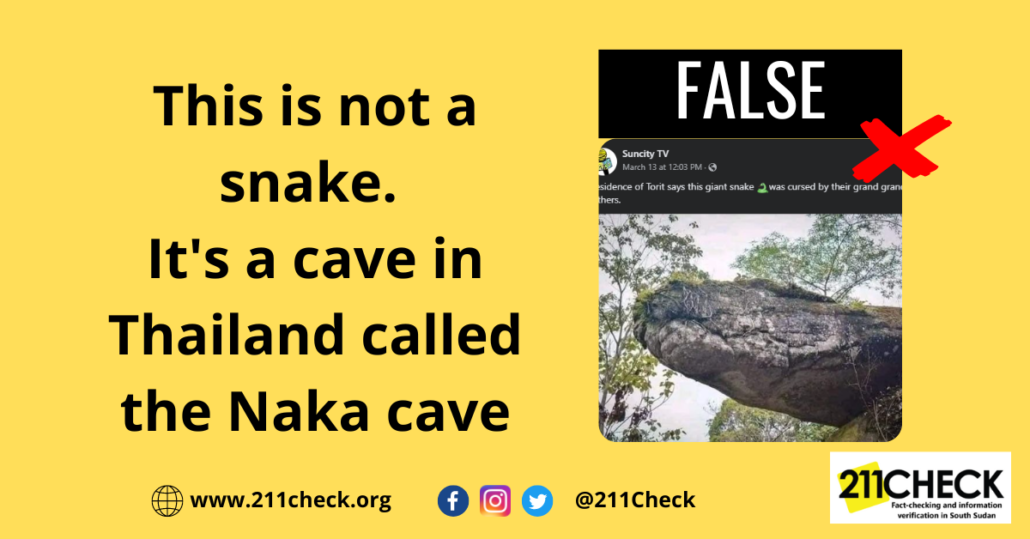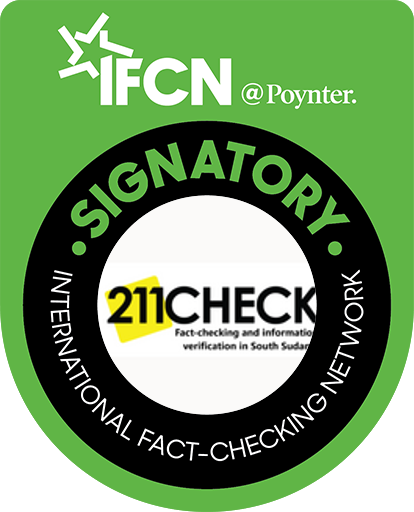Fact-check: Was this house built in Uganda by a menial labourer working in Saudi Arabia?
No, the pictures were first shared by Nigerian actress Chizzy Alichi in 2017 after she built her parents a mansion.
Writer: Jibi Moses
A Facebook post by Klia Media.ug claiming to show a house allegedly built in Uganda by a Ugandan menial labourer working in Saudi Arabia is false.
The page shared images of two buildings and two pictures of the same person in different situations. In the photo, there are pictures of a dilapidated building and a newly built mansion. It was accompanied by a caption in both Luganda and English.
Screenshot of the post as shown on Klia Media.ug
“Kadama we Saudi abikooze!!
2 year contract in Saudi Arabia congs Aisha”
Kadama is a common Luganda (unregistered) slang term, literally translated as someone doing a menial labour job. Therefore, the post translates to: “A migrant worker in Saudi Arabia has done it! A 2-year contract in Saudi Arabia. Congratulations Aisha.”
The post, which was shared on August 31, 2023, attracted 37k reactions, 5.7k comments, and 69 shares. However, some of the commenters pointed out that the pictures were taken in Nigeria, while others claimed that a two-year contract salary in Saudi Arabia as a housekeeper cannot raise such a house,amidst hundreds of congratulations. This prompted 211Check to run an investigation.
Claim Verification:
211 Check ran a Google Lens search, which showed that the image had been used on the internet since December 2017, and traced the picture to Nigeria.
NairaLand Forum, on December 27, 2017, ran a story with the headline, Nollywood Actress Chizzy Alichi Builds Mansion For Her Parent.
The site also attached two pictures of the dilapidated building and the new mansion. They explain that they got the information from her Instagram account and quote her as having said:
“People have always refer to me as “mgbeke” (local girl) that I don’t know fashion or carry designer bags/shoes/clothes. That I don’t wear expensive hair. Well, my darlings, I do know and want to wear those things, but I have been saving for this building right here. I can’t remember d last time my family travelled for Xmas because their is no house to stay (sic).”
Torizone, another Nigerian online news outlet, published the same story with the same pictures on December 26, 2017.
Similarly, Legit, another Nigerian online newspaper, published a story on October 27, 2022, with the headline, Nollywood actress Chizzy Alichi builds a mansion for her parents.
The image has been widely used on the internet, and here are some of the sources; here, here, here, and here, among others.
In the claim, the page claims the owner of the house is called Aisha; however, all the sources 211Check has gathered clearly define the owner of the house as Chizzy Alichi.
Chizzy Alichi’s Biography
Chigozie Stephanie Alichi, often known as Chizzy Alichi, is a Nigerian film actress born on December 23, 1993. She stumbled into Nollywood in 2010. She joined the Actors Guild of Nigeria by chance, applied for a movie role, and landed her first acting job.
A picture of Chizzy Alichi as used by Yours Truly
Housekeeping jobs in the Middle East:
The demand for housekeeping jobs in the Middle East has been on the rise, and East Africa, particularly Uganda, has been one of the fertile grounds for providing the needed human resources.
According to a publication by The Monitor Newspaper, this was made easier by emerging companies (1 and 2), which help facilitate the processes of visa processing and transportation.
In the long run, many people have successfully emigrated and gotten jobs with ease. However, there have been moments when the media reported on situations where workers became victims of mistreatment while in the Middle East.
A screenshot of a publication by Monitor Newspaper
Conclusion:
211 Check has found that the viral pictures of Aisha, a Ugandan menial labourer in Saudi Arabia, are false; the pictures are of actress Chizzy Alichi and were taken in 2017, when she built her parents a mansion in Nigeria.
This fact check was published by 211 Check with technical support from Code for Africa’s PesaCheck newsdesk through the African Fact-Checking Alliance (AFCA).
To ensure accuracy and transparency, we at 211 Check welcome corrections from our readers. If you spot an error in this article, please request a correction using this form. Our team will review your request and make the necessary corrections immediately, if any.
It’s vital to fight misinformation and disinformation in the media by avoiding fake news. Don’t share content you’re uncertain about. False information can harm and mislead people, risking their lives—Fact-check before sharing. For more details, visit https://211check.org/ or message us on WhatsApp at +211 917 298 255. #FactsMatter.
